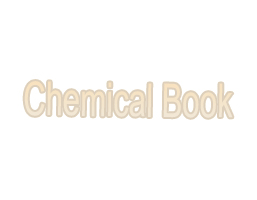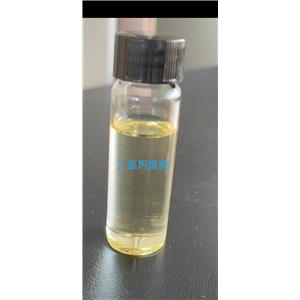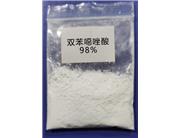### English Name: Dichlormid
### Alias: N,N - diallyl - 2,2 - dichloroacetamide
### Chemical Formula: C8H11Cl2NO
### Molecular Weight: 208.085
### CAS Registry Number: 37764 - 25 - 3
### Customs Code: 2921199032
### Structural Formula:
### II. Physical Properties
**Appearance**: Amber to brown liquid
**Melting Point**: 5.0 - 6.5 °C
**Boiling Point**: 118 °C
**Density**: 1.192 - 1.204 g/cm³
**Solubility**: Slightly soluble in water, highly soluble in kerosene, and miscible with acetone, ethanol, 4 - methylpentan - 2 - one, and xylene.
**Stability**: Unstable above 100 °C and decomposes rapidly in the presence of iron; stable to light.
### III. Uses
Dichlormid is a new - type herbicide safety protector. It can improve the tolerance of corn to thiocarbamate herbicides and prevent harm to corn from herbicides such as vernolate and acetochlor. Meanwhile, it can also protect crops like rice and wheat from the damage of herbicides including vernolate, triallate, molinate, alachlor, metolachlor, acetochlor, and butachlor. In addition, dichlormid can be used in the production of fine chemicals such as pesticide and pharmaceutical intermediates, and as a flame retardant in plastic processing. In the field of chemical synthesis, the reaction of aluminum trichloride with dichlormid can generate polymeric high - molecular materials. These new materials have excellent physical and chemical properties and are widely used in industries such as coatings. In the laboratory, dichlormid can also be used as a raw material in organic synthesis and as a reagent for the selective separation and analysis of monomer components of polymers.
### IV. Synthesis Method
Dichlormid can be synthesized by the acylation reaction of dichloroacetyl chloride and diallylamine. During the synthesis process, sodium bicarbonate and triethylamine can be used as acid - binding agents to neutralize the generated hydrogen chloride and promote the reaction to proceed towards the product.
### V. Storage Conditions
Dichlormid should be stored in an environment of 0 - 6 °C, avoiding high temperatures and direct sunlight. At the same time, due to its corrosiveness, contact with metals such as carbon steel should be avoided.

 China
China



